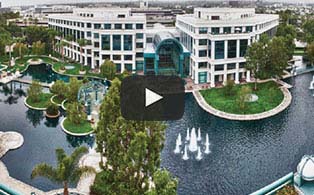The Water Garden Employs Energy Efficiency
The Water Garden—the largest commercial property in Santa Monica—put demand response programs and energy-efficient equipment to work for them. It earned $46,500 in incentives and saved more than $400,000 annually on electricity costs. With Time-Of-Use rates and Critical Peak Pricing (CPP) events, it's the perfect time to learn from their energy-saving achievements and apply similar strategies to your business.
Read More
More Energy Management Success Stories

The City of Rancho Mirage
This city received energy-saving equipment upgrades and saved more than 102,833 kWh annually.

Essential Energy Technology for Offices
Finance Your Energy-Efficient Projects
Several office management companies have already taken advantage of energy-efficient equipment. To help your business receive these same cost-efficient benefits, we offer low-interest financing for qualified energy-efficient projects.


Energy-Efficient Solutions and Tips for Buildings and Offices
Here are just a few of the energy-efficient programs and suggestions that our customers have employed to increase their cost efficiency. You’ll also find more energy-efficient solutions in our Large Buildings Fact Sheet and Small Buildings Fact Sheet, and a complete list of all our qualifying energy-efficiency incentives and demand response programs by requesting our Solutions Directory.
Want to explore your clean energy options with SCE? We want to help lower your energy bill and reduce your carbon footprint. Clean energy can help provide the solution.
Lighting and Lighting Controls
Help improve your energy efficiency by better managing your lighting costs.
- Install inexpensive occupancy sensors that turn lights off in unoccupied offices
- Use LED bulbs and LED exit signs
- Install dimmable ballasts to lower energy use in fluorescent lamps
Your business may already qualify for incentives that could put these energy-saving upgrades into effect.
Cooling
Maximize your energy saving by effectively managing your air-conditioning systems.
- Install programmable thermostats
- Install window film and blinds to keep the heat out
- Switch to LED bulbs and decrease the amount of office heat and A/C energy use
- Sign up for HVAC Maintenance
- Install sensory controllers on vending machines or shut them down for a short period
There are many more energy-efficient solutions for your business.
Energy-Efficient Equipment
Purchase office equipment that more effectively manages your energy use.
- Upgrade to high-efficiency office equipment, including laptops, which use less than a third of the energy of a desktop
- Install load-sensing or occupancy-sensing plug strips to make it easier for your staff to power down
- Install water-conserving toilets and faucets in bathrooms
- Replace older, less water-efficient equipment
- Install new, water-efficient commercial equipment to minimize water demand
- Change process water system to reuse processed wastewater
Your business can benefit from even more energy-efficient equipment options.
Demand Response Programs (DR)
With these programs, receive bill credits for temporarily reducing energy use upon request during periods of high-energy demand. Choose the ones that best fit your operational needs.
Automated Demand Response (Auto-DR)
Receive energy savings by using smart technology that effortlessly and temporarily reduces the amount of energy your business uses (known as “load reduction”) during a DR event. With Auto-DR, load reduction is automatic and reliable, so it’s easier to participate in DR programs to capitalize on program earnings and help lower your energy costs.
- Install equipment that automates electrical load reduction during demand response events and receive Automated Demand Response Technology incentives

No-Cost, Do-It-Yourself Tips
Here are some immediate ways to significantly reduce your business energy use.
- Enable lower power mode setting for computers, monitors, and imaging equipment
- Turn off unnecessary indoor lighting, signs, window displays, and office equipment
- Engage staff; make sure they understand why, when, and how to power down
- Encourage staff to minimize printing to reduce energy
- Pre-cool work areas, then cycle ventilation and A/C units
- Charge batteries and battery-operated equipment prior to TOU On-Peak hours, then disconnect battery charges and use only pre-charged equipment during TOU On-Peak hours
- Make comprehensive changes to processes to reduce water consumption


